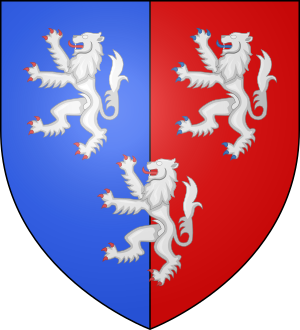Edward Herbert (judge) facts for kids
Sir Edward Herbert (born around 1648, died 1698) was an important English judge. He held the top legal job of Chief Justice of the King's Bench. This was during the time when King James II ruled England.
Contents
Sir Edward Herbert: A Judge in King James II's Time
Sir Edward Herbert was a key figure in the legal system of England. He served during a time of big changes and challenges. His career shows how judges worked with the king's power.
Early Life and Education
Edward Herbert was the younger son of Sir Edward Herbert. His father was a very important lawyer for King Charles II. Edward's mother was Margaret. She was the daughter of Thomas Smith, a Master of Requests.
Edward went to Winchester College in 1661 when he was 13. Later, he studied at New College, Oxford. He earned his first degree in 1669. After his studies, he joined the Middle Temple. This was a place where lawyers trained. He became a lawyer and worked in Ireland for some years. In 1677, he became a King's Counsel there. This meant he was a senior lawyer for the Crown.
Rising Through the Legal Ranks
After working in Ireland, Edward Herbert returned to England. In 1683, he became the Chief Justice of Chester. This was an important legal position. The next year, he was knighted by the king. This meant he was given the title "Sir."
In 1685, he became the Attorney General for the Duke of York. When the Duke became King James II, Herbert became the Attorney General for the Queen. He also became a Member of Parliament for Ludlow. Herbert believed strongly that the king had special powers. This belief helped him move up quickly in his career.
In October 1685, he joined the Privy Council. This was a group of close advisors to the king. On the same day, he became a Serjeant-at-law. This was a high rank for a lawyer. Then, he became the Chief Justice of the King's Bench. This was the highest judge in England. He took over from George Jeffreys, who became the Lord Chancellor.
The Famous 'Godden v Hales' Case
A very important case happened in 1686. It was called Godden v Hales. Sir Edward Hales was a Roman Catholic. He was found guilty of holding a job in the army without taking certain oaths. These oaths were required by the Test Act. This law said that people in public office had to be Protestant.
Hales's coachman, Arthur Godden, sued him. This was a planned lawsuit to test the law. Hales argued that the king had given him a special permission. This permission was called a "dispensation." It allowed him to ignore the Test Act.
Chief Justice Herbert heard the case. He ruled in favor of Hales. Herbert said that the king had a special power. This power allowed him to ignore certain laws for specific people. He said the king was the only one who could decide why this was needed. This decision made many people in the country very worried. They felt the king was becoming too powerful.
Herbert wrote a paper explaining his decision. He said that if something was not against God's law, the king could make it legal for a specific person. Other lawyers disagreed with him.
Standing Up to the King
In 1686, Herbert joined a new group called the ecclesiastical commission. This group had a lot of power over the clergy (church officials). But Herbert did not always agree with the king.
The king wanted to use martial law. This meant using military rules instead of regular laws. Herbert refused to order the execution of a soldier who had run away. This upset the king.
Because of this, Herbert was moved to a different job in 1687. He became the Chief Justice of the Common Pleas. This was still an important role, but not as high as his previous one. He remained on the ecclesiastical commission. However, he again disagreed with the king. He said the king's actions against Magdalen College could not be made legal. He also voted against punishing the college's officials.
Loyalty and Later Life
When King James II left England, Herbert followed him to France and then to Ireland. Because of this, he was listed as an enemy of the new government. His lands were taken away. His brother, Arthur, who supported the new king, received some of his property.
After a rebellion in Ireland, Herbert returned to France with King James. He lived at St. Germain-en-Laye. King James gave him the title of Earl of Portland. He also made him Lord Chancellor. Herbert helped King James write official statements.
However, Herbert was a Protestant. King James never fully trusted him. Herbert also spoke his mind freely. He soon lost the king's full trust. In 1692, he was dismissed and moved to Flanders. Later, he returned to St. Germain-en-Laye. He lived mostly on money from his brother. Sir Edward Herbert died in November 1698. He never married. People said he was a good and kind person, even if he wasn't the best lawyer.


